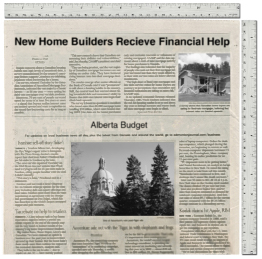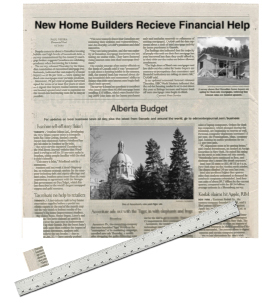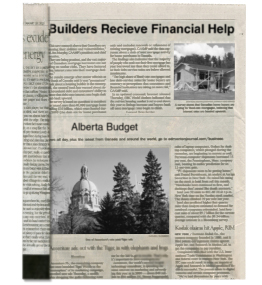Module 2
1. Module 2
1.8. Page 3
Module 2: The Imperial System
Explore

© Wieslaw Fila/Dreamstime
How do the square inch, square foot, and square yard compare to each other in size? This is what you will investigate next.
 Try This
Try This
You will need a ruler that shows inches, a tape measure that shows feet and inches, old newspapers, scissors, a marker, a calculator, and your estimation skills.
Work with a partner if possible. Later in the lesson, you will be asked to attach a copy of your responses to TT 8 to
TT 11 to your Assignment Booklet. Your responses to TT 8 to TT 11 will be marked as part of your Assignment Booklet.
From an old newspaper, cut out at least 13 identical squares. Each square must be one foot on each side. With your marker, write square foot on each square.
Next, arrange as many of these squares as is necessary to form a large square three feet on each side. Remember that three feet is equal to one yard.
TT 8. How many square feet are there in your arrangement? What might you call this large square area?
Take one of the square feet you cut out. From one corner, cut a small square that is 1 in on each side.
Fold the square foot so that, when it is unfolded, the creases show all the square inches in a square foot.






TT 9. How many square inches are there in a square foot? How did you arrive at your answer?
Finally, take 12 of your square feet and arrange them to form as many different rectangles as you can. Share the different ways the 12 square feet can be organized.
TT 10. Complete a table like the following for all of the rectangles you were able to make. For each arrangement, record the area and perimeter (the distance around).
|
Arrangement of Square Feet |
Area |
Perimeter |
|
|
12 ft2 |
16 ft |
|
|
|
|
|
|
TT 11. What did you notice about the rectangles, their areas, and their perimeters? Did you use the same words to describe perimeter and area?
Work with others to construct a statement that describes any relationship between the shape of rectangular objects, area, and perimeter.
 Share
Share
It’s time to share your answers to TT 8–TT 11. Remember that sharing work is an important part of learning. Use the following tips to ensure you get all the benefits from this sharing opportunity:
- Complete the questions to the best of your ability. Make sure your answers are in a form that you can easily share with another student or with your teacher, if so directed. You may find a digital camera handy to record arrangements.
- Use your class discussion area, or another method indicated by your teacher, to post your answers and to view the work of the people you’re sharing with.
- Compare your answers to the other posted answers. Identify where you have similar answers and where your answers are different. Discuss all differences between answers until you agree on the answers. If necessary, you may wish to involve your teacher in your discussion.
- When comparing answers for TT 10, make sure you have data for all the possible arrangements.
- Revise your answers where necessary.
Save a revised copy of your work in your course folder. Ask your teacher whether you should also save a summary of your discussion in your course folder.
